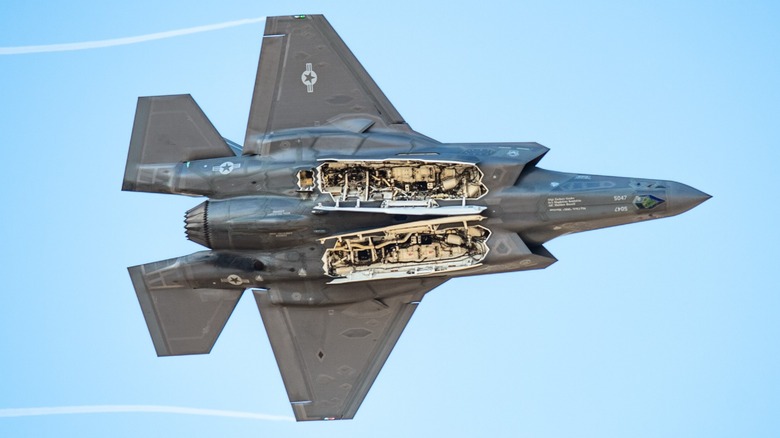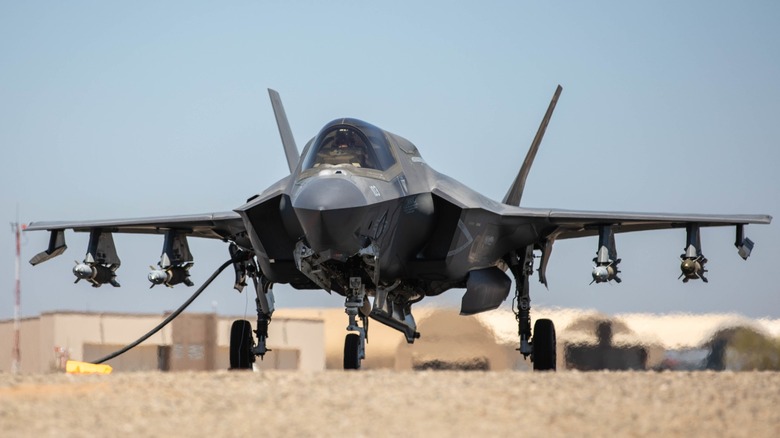Why The F-35 Lightning Hides Its Weapons Inside
The F-35 Lightning II is one of the most advanced fighter jets ever to soar through the unfriendly skies, and it's jam-packed with weapon systems. In fact, the F-35 is the first stealth fighter the United States authorized to carry nuclear weapons, capable of hiding two B61 tactical nuclear bombs inside its internal weapons bays. The F-35 also has six external hardpoints, allowing it to carry a variety of ordnance on the underside of its wings.
That's likely what most people think of when they consider an armed fighter. If you watch movies like "Top Gun" or see pictures of fighters like the F/A-18 Hornet, you'll see them decked out with missiles and bombs in plain view. The F-35 is somewhat different. While it has the capability to carry external weapon systems, it typically stores its weapons internally. This is done for several reasons, and it's not to keep prying eyes from seeing what it's carrying. After all, it's a highly effective stealth aircraft, which is the main reason it keeps its weapons hidden inside.
Internal weapon bays reduce its radar cross-section (RCS), making it more difficult to pick up on radar. Additionally, while missiles and rockets are designed to fly through the air, they add drag to the aircraft carrying them. So, eliminating them from external hard points reduces the RCS and minimizes drag, making the F-35 faster than the competition.
The advantages and disadvantages of using only internal weapons bays
While the F-22 Raptor is the stealthiest fighter jet, the F-35 was designed with the lessons learned from that program. Both aircraft have sizable internal weapons bays, though limiting ordnance to these locations while eschewing external hard points has its disadvantages. When an F-35 is tasked with a mission, it's outfitted with whatever ordnance is best suited to get the job done, so it's not always necessary to pack the aircraft with as many weapons as possible. Still, by limiting itself to only the internal bay, the F-35 carries six fewer weapon systems than it otherwise could.
When going for a maximum stealth configuration, the F-35 has a payload capacity of 5,700 pounds because it's limited to its internal bays. This allows for up to four total weapon systems like the aforementioned nuclear and/or conventional bombs, four AIM-120 AMRAAM missiles, or a split of two AMRAAMs and two bombs. That's an ideal configuration for stealth missions, but if air superiority is attained, the F-35 can be sent up armed to the brim.
This increases its RCS, but it's still stealthy even with external ordnance. With both the internal and external hardpoints loaded, the F-35 carries 18,000 pounds. That comes out to 14 AMRAAMs and two AIM-9 Sidewinder missiles for air-to-air combat. Alternatively, it can carry two AMRAAMs, two Sidewinders, and six JDAMs, as well as a variety of other ordnance in multiple carry configurations.

